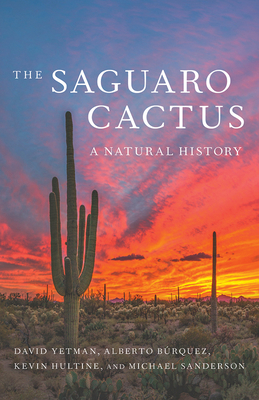
description
characteristic shape--its arms stretching heavenward, its silhouette often resembling a human--has become the emblem of the Sonoran Desert of southwestern Arizona and northwestern Mexico. The largest and tallest cactus in the United States, it is both familiar and an object of fascination and curiosity. This book offers a complete natural history of this enduring and iconic desert plant. Gathering everything from the saguaro's role in Sonoran Desert ecology to its adaptations to the desert climate and its sacred place in Indigenous culture, this book shares precolonial through current scientific findings. The saguaro is charismatic and readily accessible but also decidedly different from other desert flora. The essays in this book bear witness to our ongoing fascination with the great cactus and the plant's unusual characteristics, covering the saguaro's: history of discovery, place in the cactus family, ecology, anatomy and physiology, genetics, and ethnobotany. The Saguaro Cactus offers testimony to the cactus's prominence as a symbol, the perceptions it inspires, its role in human society, and its importance in desert ecology.
member goods
No member items were found under this heading.
listens & views

CANTATE PER IL CARDINAL OTTOBONI: ...
by HANDEL / MILANESI / VITALE / RISONANZA / BONIZZONI
COMPACT DISC$19.25

BILL WINSTON PRESENTS LIVING WORD ...
by WINSTON,BILL AND LIVING WORD
COMPACT DISCout of stock
$11.99
Return Policy
All sales are final
Shipping
No special shipping considerations available.
Shipping fees determined at checkout.





